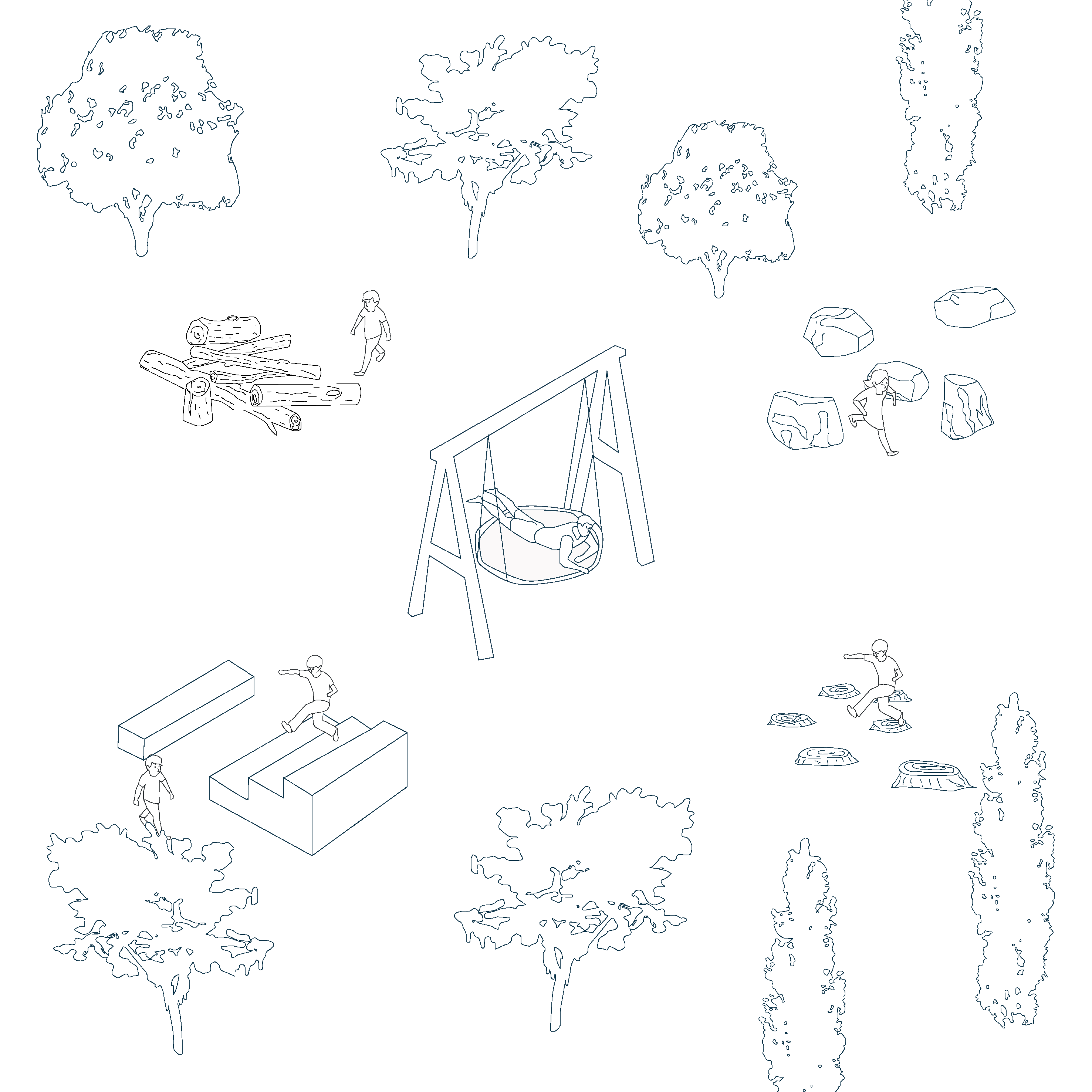Playgrounds or play areas are essential in public spaces since they are intended for, and therefore represent, the youngest population: children. Playgrounds should be diverse, accessible and inclusive.

- Use natural resources (large stones, logs, etc.) to design your game systems. This increases biophilia, educates environmentally, gives more climatic comfort and reinforces the biological continuity of the parks.
- Each game element must have a free perimeter space of at least 150 cm. Install non-figurative games. Abstract games have multiple ways of being used and therefore validate any user interaction with the medium.
- Install swings, slides, and seesaws
- Create areas to run, move freely, jump and climb in an abstract way as they encourage diversification of use, age or need.
- Develop games that facilitate contemplation, sitting, rolling and crawling, as well as stimulating surfaces due to their touch, hearing, temperature, sight, etc. .
- Install substructures where more ephemeral games can be attached. Some children need games with a more temporary installation as they are more ephemeral materials: this is the case of children on the autism spectrum, for example.
- Have mediators in the children’s environment to accompany children with diverse abilities in their games
Sources
- https://www.une.org/encuentra-tu-norma/busca-tu-norma/norma?c=N0060005
- https://openaccess.uoc.edu/bitstream/10609/147117/4/ASD-Publics_Design-Handbook_ENG.pdf
- https://www.punt6.org/es/books/espacios-para-la-vida-cotidiana/
- https://www.miteco.gob.es/fr/ceneam/recursos/materiales/guia-diseno-entornos-escolares.html
- https://www.oficinadeaccesibilidaduniversal.es/accesibilidad-arquitectonica/documentos/#movilidad
- https://ecuador.unwomen.org/sites/default/files/2022-11/GUI%CC%81A-10-B.pdf
- Carers
- Children
- Cognitive abilities
- Decolonial perspective
- Enviroment
- Gender perspective
- Hearing impairment
- Low-education
- Older people
- Other(+)
- Physical abilities and features
- Sin categoría
- Temporary
- Universal Design
- Visual impairment